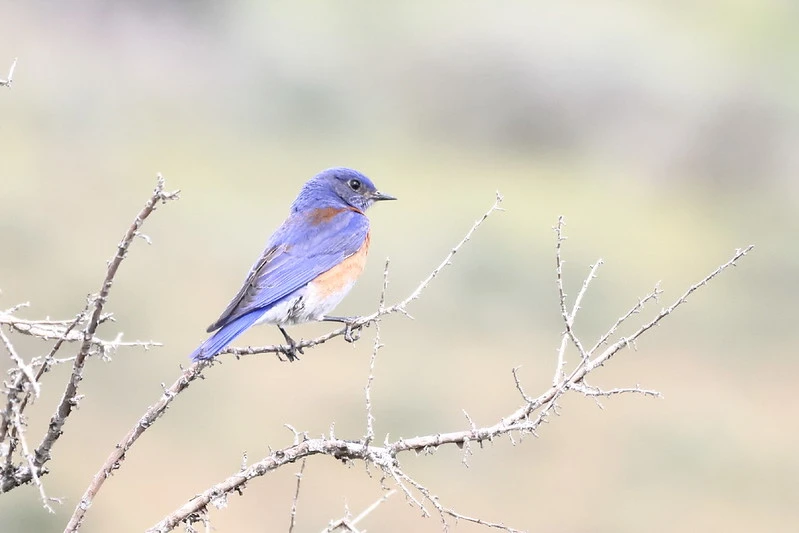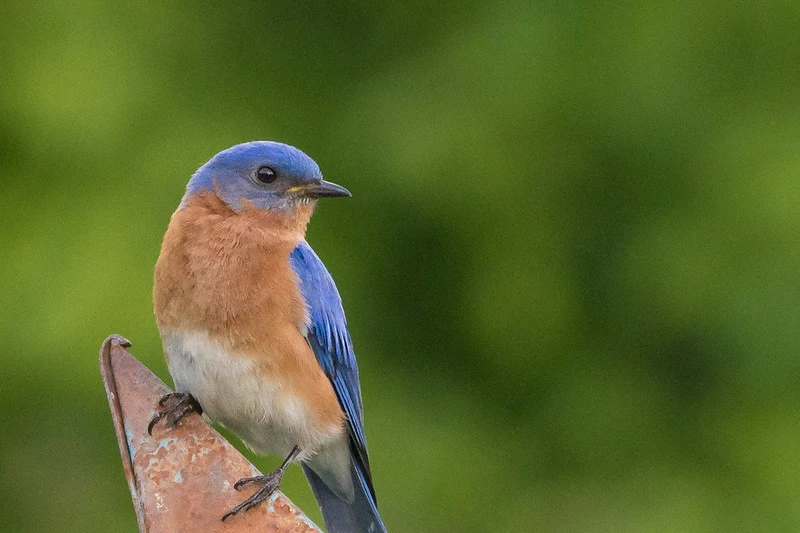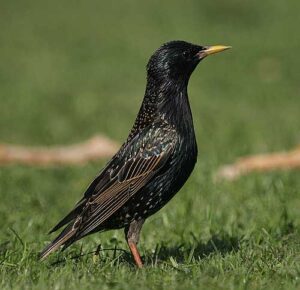Dive into the fascinating world of birds with our guide on the various types of tit birds. Explore their colors, habits, and unique characteristics.
Introduction
Birdsong in the early morning, a vibrant display of colors against the sky, and the delicate flutter of wings—such is the captivating world of tit birds. In this introductory chapter, we embark on a journey to unravel the allure and significance of these small passerine wonders.
Understanding the Fascinating World of Tit Birds
From the bustling city parks to the serene woodlands, tit birds have carved a niche in various ecosystems, contributing to the rich tapestry of avian diversity. Let’s take a moment to appreciate the distinct charm these birds bring to our natural surroundings.
- Brief Overview of Tit Birds
- Tit birds, belonging to the Paridae family, encompass a diverse group of small songbirds.
- Renowned for their lively nature, tit birds are often recognized for their distinctive calls and lively acrobatics.
- The Paridae family includes well-known species such as the Eurasian Blue Tit, Great Tit, and Coal Tit, each with its unique characteristics.
- Importance in Avian Diversity
- Despite their small size, tit birds play a crucial role in maintaining ecological balance.
- Their foraging habits, including insect predation and seed dispersal, contribute to the overall health of their habitats.
- Understanding and appreciating tit birds is not just an exploration of avian wonders but also a journey into the delicate interconnectedness of our ecosystems.
Types of Tit Birds: An Overview
To delve deeper into the world of tit birds, we’ll navigate through the diverse spectrum of these avian delights. This chapter sets the stage for a detailed exploration of key species, shedding light on their distinct traits and habitats.
- Highlight the Diversity of Tit Birds
- A vast array of tit species spans across continents, each adapted to its unique environment.
- Their differences in coloration, size, and behavior make them a fascinating subject for bird enthusiasts and researchers alike.
- Key Species and Their Distinct Traits
- Introduction to prominent tit bird species like the Eurasian Blue Tit, Great Tit, and others.
- A glimpse into the specific traits that distinguish each species, lays the groundwork for an in-depth exploration in subsequent chapters.
In the chapters that follow, we will embark on a detailed exploration of the noteworthy tit birds, their characteristics, behaviors, ideal observation tips, conservation status, and more. Our aim is to unravel the intricacies of these feathered wonders and foster a deeper appreciation for the vital role they play in the natural world.
The Noteworthy Tit Birds

Delving into the vibrant realm of tit birds, this chapter unfurls the unique characteristics and habitats of the noteworthy species that adorn our ecosystems.
Eurasian Blue Tit

Elegance personified, the Eurasian Blue Tit graces our landscapes with a stunning palette of blue and yellow. This section unveils the physical allure and the preferred dwelling grounds of this enchanting species.
- Physical Characteristics
- Striking blue plumage with a distinctive yellow chest and wings.
- Compact size, typically ranging between 10 to 12 cm.
- A delightful blend of color that makes it a sought-after subject for bird enthusiasts.
- Habitat and Distribution
- Flourishes in deciduous and mixed woodlands, gardens, and parks.
- Widespread across Europe and Asia, demonstrating adaptability to diverse climates.
- Nesting in tree cavities, the Eurasian Blue Tit’s habitat preferences contribute to its ecological significance.
Great Tit

Commanding attention with its bold markings and robust size, the Great Tit stands as a charismatic representative of the tit bird family. In this section, we unravel the dimensions and behaviors that make the Great Tit truly great.
- Size, Coloration, and Markings
- Noteworthy for its large size, measuring around 14 cm in length.
- Prominent black head with white cheeks, contrasting with a vibrant yellow breast.
- A robust black stripe runs down its chest, contributing to its distinctive appearance.
- Behavioral Traits
- Known for its powerful and varied songs, showcasing vocal dexterity.
- Agile and acrobatic, adept at navigating tree branches and foraging for insects.
- Displays territorial behavior, often asserting dominance in its chosen habitat.
Coal Tit

In the intricate tapestry of tit birds, the Coal Tit adds its own brushstroke, characterized by subtle elegance and nuanced variations. This section illuminates the unique features and breeding habits of the Coal Tit.
- Appearance and Variations
- Compact size with a distinct black cap and bib, setting it apart from its relatives.
- Varied regional variations, each showcasing subtle differences in plumage.
- Often identified by its distinctive call, a melodic trill that echoes through coniferous forests.
- Breeding Habits
- Selects tree holes or nest boxes for breeding, demonstrating nesting site specificity.
- Female Coal Tits play a significant role in nest construction, showcasing cooperative behavior.
- A seasonal breeder, the Coal Tit’s reproductive habits add an intriguing layer to its life cycle.
This chapter offers a glimpse into the diverse and captivating world of Eurasian Blue Tits, Great Tits, and Coal Tits. As we proceed, subsequent chapters will unravel the tales of other tit birds, providing a comprehensive understanding of these feathered wonders.
Characteristics and Behaviors
Embark on a journey into the intricate tapestry of tit birds’ common characteristics and behaviors, unraveling the fascinating aspects that define these avian wonders.
Common Characteristics Among Tit Birds
Unlocking the secrets of tit birds’ shared physical traits, this section sheds light on the commonalities that bind these feathered companions.
- Shared Physical Traits
- Size and Structure:
- Compact and agile, tit birds typically measure between 10 to 15 cm.
- Adorned with vibrant plumage, often featuring combinations of blue, yellow, black, and white.
- Distinctive Markings:
- Many tit species exhibit unique markings, such as black caps, crests, or colorful bibs.
- These markings often play a crucial role in species identification and mate attraction.
- Adaptations for Foraging:
- Specialized beaks adapted for cracking seeds and extracting insects from bark.
- Agile and acrobatic, tit birds display remarkable dexterity during foraging activities.
- Size and Structure:
- General Behaviors and Habits
- Social Nature:
- Tit birds are often social creatures, forming flocks during non-breeding seasons.
- Display cooperative behaviors, such as mobbing to deter predators.
- Vocalizations:
- Varied and distinctive songs contribute to the acoustic richness of their habitats.
- Vocal communication serves various purposes, including mate attraction and territory establishment.
- Territorial Instincts:
- Many tit species exhibit territorial behavior, fiercely defending their nesting sites.
- Territoriality plays a crucial role in the reproductive success of these birds.
- Social Nature:
Nesting and Reproduction
Dive into the enchanting realm of tit birds’ nesting preferences and reproductive habits, uncovering the intricacies of their life cycles.
- Nesting Preferences
- Selection of Nesting Sites:
- Tit birds are known for their versatility in choosing nesting locations.
- Common sites include tree cavities, nest boxes, and occasionally, artificial structures.
- Nest Construction:
- Meticulous in nest building, tit birds utilize a combination of moss, feathers, and other materials.
- Females often take the lead in constructing nests, emphasizing collaborative efforts.
- Selection of Nesting Sites:
- Reproductive Habits
- Seasonal Breeding:
- Tit birds typically breed in the spring and early summer, aligning with peak insect availability.
- Synchronized breeding cycles contribute to the survival of the species.
- Incubation and Fledging:
- Female tit birds are primarily responsible for incubating eggs.
- Both parents actively participate in feeding and caring for the fledglings.
- Seasonal Breeding:
As we delve deeper into the lives of tit birds, the upcoming chapters will explore the art of observing these captivating creatures in the wild, offering insights into optimal birdwatching techniques and the equipment needed for an enriching experience.
Observing Tit Birds: Tips for Birdwatchers

Embark on an avian adventure as we delve into the art of observing tit birds in their natural habitats. This chapter provides valuable insights into optimal birdwatching locations, seasonal variations, and the essential equipment for a rewarding birdwatching experience.
Ideal Birdwatching Locations
Discover the enchanting landscapes where tit birds thrive, offering birdwatchers an opportunity to witness their natural behaviors.
- Woodlands and Forests:
- Tit birds, including the Eurasian Blue Tit and Great Tit, often inhabit woodlands and dense forests.
- Explore nature reserves and protected areas with diverse tree species to increase the chances of sightings.
- Gardens and Parks:
- Urban birdwatchers can find tit birds in gardens and parks, attracted by trees and shrubs.
- Set up bird feeders with seeds to encourage visits, providing a closer look at these charming birds.
- Wetland Areas:
- Species like the Marsh Tit may frequent wetland habitats.
- Lakeshores and marshy areas are prime locations for observing their unique adaptations.
- Altitude Zones:
- In mountainous regions, tit species like the Crested Tit may inhabit specific altitude zones.
- Consider higher elevation locations for a chance to encounter these specialized birds.
- Seasonal Variations:
- Spring and Early Summer:
- Breeding seasons bring increased activity as tit birds establish territories and courtship behaviors.
- The ideal time for witnessing nesting activities and fledgling care.
- Autumn and Winter:
- Winter is an excellent time for observing tit birds, especially around feeding stations.
- Deciduous trees losing their leaves enhance visibility, making birdwatching more accessible.
- Spring and Early Summer:
Recommended Equipment
Equip yourself with the right tools to enhance your birdwatching experience, ensuring you capture the beauty of tit birds with precision.
- Binoculars:
- Opt for quality binoculars with a comfortable grip and appropriate magnification (8×42 or 10×42).
- Clear optics and a wide field of view enhance your ability to spot and follow tit birds.
- Cameras and Telephoto Lenses:
- Capture memorable moments with a DSLR or mirrorless camera.
- A telephoto lens (300mm or more) allows for detailed photographs without disturbing the birds.
- Field Guides:
- Carry a comprehensive field guide specific to bird species in your region.
- Digital apps with bird identification features can be valuable resources.
- Notebook and Pen:
- Document your observations, noting specific behaviors, locations, and any unique markings.
- Keep a record of dates and times for future reference.
- Apparel and Accessories:
- Wear subdued colors to blend into the environment and avoid startling birds.
- A comfortable hat, sunscreen, and insect repellent contribute to an enjoyable birdwatching session.
Armed with these insights, you’re well-prepared to embark on a tit birdwatching expedition. The next chapter explores the conservation status of tit birds, shedding light on the efforts and challenges faced by these captivating avian species.
Conservation Efforts and Challenges
In this pivotal chapter, we shift our focus from the awe-inspiring beauty of tit birds to the critical realm of conservation. Understanding the conservation status, threats faced by these avian wonders, and the initiatives taken to protect them is paramount in ensuring their survival for generations to come.
Conservation Status of Tit Birds
Overview of Conservation Categories
- Least Concern (LC):
- Species like the Great Tit and Blue Tit often fall under this category.
- Populations are relatively stable, and they are not currently facing significant threats.
- Near Threatened (NT):
- Certain tit species, such as the Willow Tit, may find themselves in this category.
- While not currently endangered, they face specific threats that warrant monitoring.
- Vulnerable (VU):
- The conservation status of some tit birds, like the Crested Tit, may be classified as vulnerable.
- Factors like habitat loss or specific environmental changes contribute to their vulnerability.
Threats to Tit Bird Populations
- Habitat Loss:
- Urbanization, deforestation, and land-use changes lead to the degradation and loss of tit bird habitats.
- Mitigation efforts focus on preserving and restoring these crucial environments.
- Climate Change:
- Shifts in climate patterns can impact the availability of food sources and nesting sites.
- Conservation strategies involve studying and adapting to these changes, aiming to minimize negative effects.
- Predation and Nesting Challenges:
- Increased predation, often by invasive species, poses a threat to tit bird nests and eggs.
- Conservationists work on habitat management and predator control to enhance nesting success.
Conservation Initiatives
Highlighting Ongoing Conservation Projects
- Tit Bird Monitoring Programs:
- Collaborative efforts involve monitoring tit bird populations to track trends and identify areas of concern.
- Citizen science initiatives play a crucial role in collecting valuable data.
- Habitat Restoration Programs:
- Restoration projects focus on rehabilitating habitats affected by human activities.
- Planting native trees and creating nesting sites contribute to the recovery of tit bird populations.
- Education and Awareness Campaigns:
- Public engagement is vital in garnering support for tit bird conservation.
- Educational programs raise awareness about the importance of these birds in maintaining ecological balance.
Citizen Involvement in Tit Bird Protection
- Creating Bird-Friendly Spaces:
- Encouraging individuals to create bird-friendly environments in their gardens and communities.
- Providing nesting boxes and maintaining natural food sources contribute to local conservation.
- Reporting and Monitoring:
- Citizen scientists can contribute to conservation by reporting tit bird sightings and monitoring their activities.
- Online platforms and mobile apps facilitate easy data sharing and participation.
As we conclude this chapter, we recognize the collective responsibility in safeguarding these charismatic tit birds. The final chapter awaits, offering a recap of key insights and a call to action for appreciating and preserving the diverse world of tit birds.
Frequently Asked Questions (FAQs)
Navigating the nuances of tit bird characteristics and behaviors inevitably raises questions. This FAQ chapter serves as a comprehensive guide, addressing the queries that pique the curiosity of both novice and seasoned bird enthusiasts.
What do tit birds eat?
- Diverse Diet:
- Tit birds are omnivores, feasting on a varied diet.
- Their menu includes insects, seeds, berries, and even small fruits.
- Seasonal Changes:
- Dietary preferences may shift with seasons, adapting to the availability of specific foods.
- In spring and summer, insects become a primary source of nutrition.
How can I attract tit birds to my garden?
Garden-Friendly Tactics:
- Provision of Food:
- Set up bird feeders with a mix of seeds, suet, and mealworms.
- Tit birds are attracted to sunflower seeds and peanuts.
- Planting Native Vegetation:
- Choose native plants that offer natural food sources and create a bird-friendly habitat.
- Dense shrubs and trees provide ideal shelter and nesting sites.
Are tit birds endangered?
- Conservation Status:
- While some tit species may face threats and fall into conservation categories, many are of the least concern.
- Continuous monitoring and conservation efforts aim to protect vulnerable populations.
What is the lifespan of tit birds?
- Varied Lifespan:
- The lifespan of tit birds varies among species.
- On average, tit birds can live up to 2 to 3 years, with factors like predation and environmental conditions influencing their longevity.
Can tit birds mimic other bird species?
- Limited Mimicry:
- Tit birds are not renowned for intricate mimicry.
- While some individuals may produce simple calls resembling other birds, it’s not a common behavior among tit species.
As we delve into these frequently asked questions, the complexities of bird life unfold. Understanding these intricacies not only deepens our appreciation for these feathered creatures but also equips us with the knowledge to coexist harmoniously.
Conclusion
As our journey through the captivating world of tit birds comes to a close, it’s crucial to reflect on the myriad facets that make these avian wonders integral to our ecosystems. This conclusion encapsulates the essence of our exploration, emphasizing the importance of appreciation and active conservation efforts.
Recap of Key Points
- Diversity Unveiled:
- The overview highlighted the incredible diversity among tit birds, showcasing their unique traits and characteristics.
- From the Eurasian Blue Tit to the Tufted Titmouse, each species adds a layer to the rich tapestry of avian life.
- Insights into Behaviors:
- Delving into common characteristics and behaviors uncovered the fascinating aspects of tit bird life.
- Nesting preferences and reproductive habits showcased the intricacies of their survival strategies.
- Guiding Birdwatchers:
- Chapter 4 provided insights into optimal birdwatching locations, seasonal variations, and essential equipment.
- Armed with this knowledge, bird enthusiasts can enhance their birdwatching experiences.
- Conservation Imperatives:
- Recognizing the conservation status and initiatives underscored the challenges tit birds face.
- The call for citizen involvement echoes the collective responsibility to protect these species.
Encouraging Appreciation and Conservation Efforts
In conclusion, fostering an appreciation for tit birds goes hand in hand with securing their future. As guardians of biodiversity, it is our duty to be stewards of these feathered marvels. Whether through birdwatching, supporting conservation projects, or simply spreading awareness, every effort contributes to the well-being of tit birds and, by extension, our ecosystems.
Let this conclusion serve as a call to action, urging readers to carry the torch of admiration and conservation forward. Together, we can ensure that the melodic songs and vibrant plumages of tit birds continue to enchant generations to come.




























